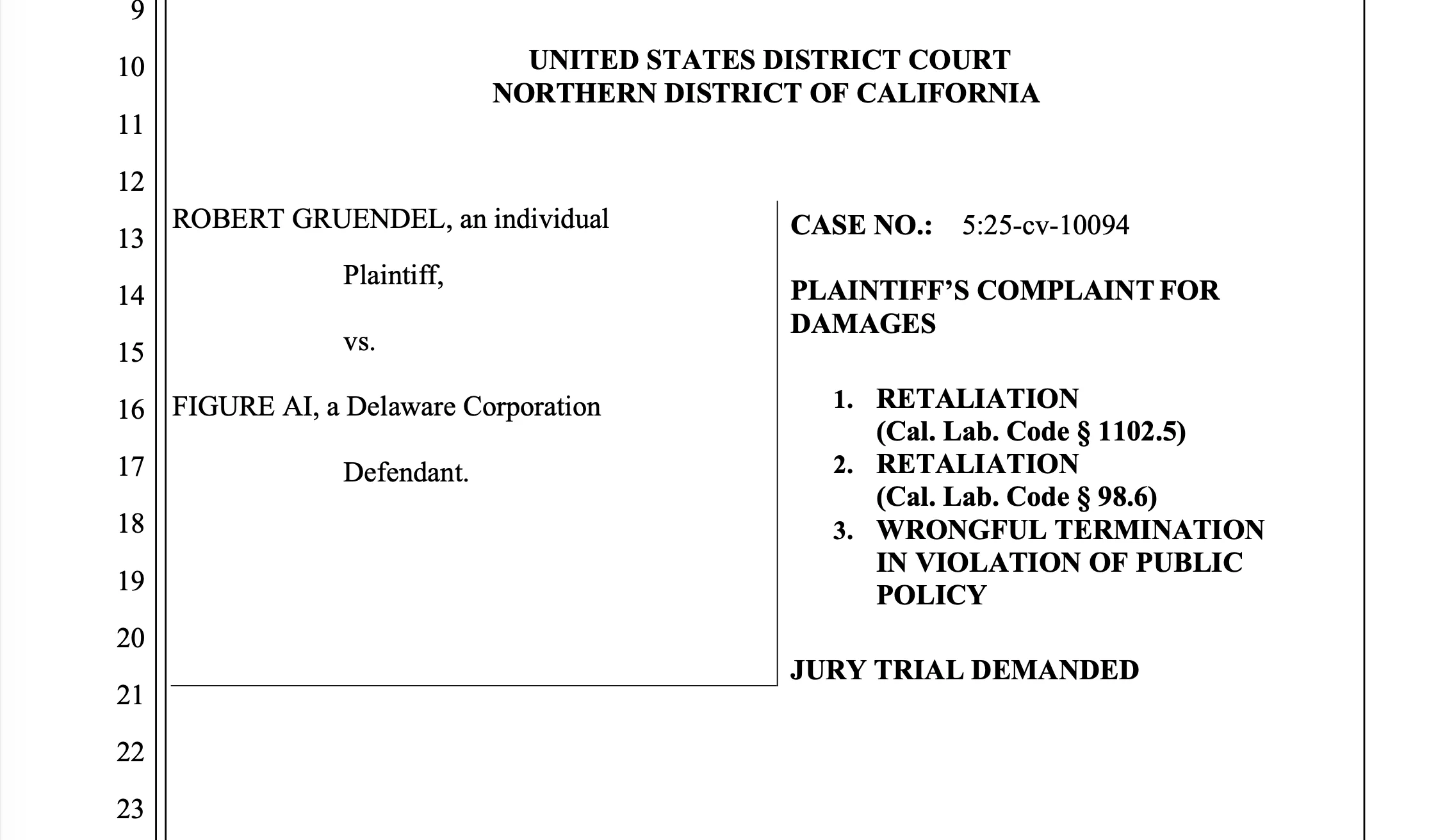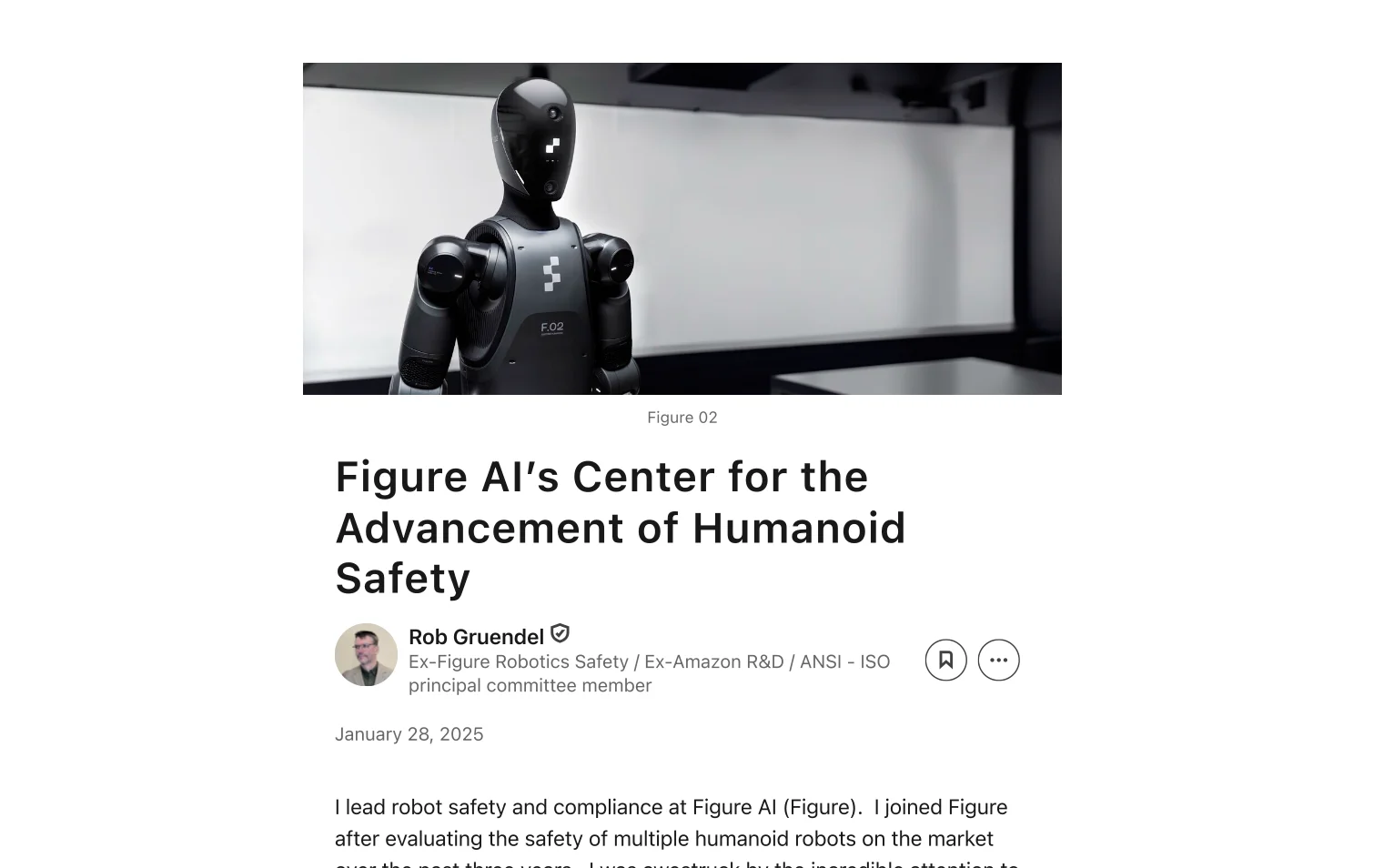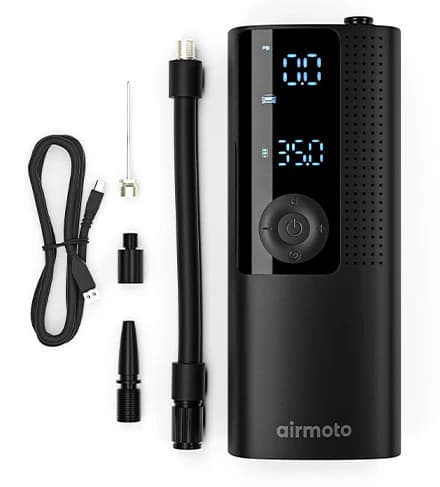- Published on
Ex-Safety Head Sues Figure AI, Alleging Retaliation Over "Skull-Fracturing" Robot Risks

SUNNYVALE, CA – The race to put a humanoid robot in every home has hit a legal speed bump. Figure, the $39 billion startup backed by Nvidia and Jeff Bezos, is facing a whistleblower lawsuit from its former Head of Product Safety, who alleges he was fired for sounding the alarm on robots he claims were "powerful enough to fracture a human skull."
The complaint, filed Friday in the Northern District of California, paints a picture of a safety culture clashing violently with the Silicon Valley ethos of "move fast and break things." The plaintiff, Rob Gruendel—a veteran safety engineer with previous stints at Amazon and BMW—claims his warnings were treated as "obstacles, not obligations" by executives rushing to commercialize a general-purpose humanoid.
The "Gash in the Refrigerator"
The complaint details a specific incident involving the Figure 02 (F.02) robot. According to the filing, a malfunction caused the robot to strike a steel refrigerator door, carving a "¼-inch deep gash" into the metal. The incident reportedly occurred while an employee was standing nearby, narrowly avoiding injury.
Gruendel alleges that subsequent impact testing revealed the robot moved at "super-human speed" and generated forces "twenty times higher than the threshold of pain". He estimated the force to be "more than twice the force necessary to fracture an adult human skull".
When Gruendel presented this data to CEO Brett Adcock via Slack in late July, warning that the robot could inflict "severe permanent injury," he claims his message was ignored.

"Gutted" Safety Roadmaps
The lawsuit touches on a sensitive nerve in the robotics investment world: the gap between what investors are promised and what engineering can deliver.
Gruendel alleges that he created a comprehensive product safety roadmap that contributed to the decision of two major investors to fund the company. However, he claims that shortly after the funding round closed, the plan was "gutted" by Chief Engineer Kyle Edelberg.
Specifically, the suit alleges that a project to certify an emergency stop (E-Stop) function—a critical fail-safe for industrial machinery—was cancelled to save time. Gruendel warned colleagues that removing safety features promised to investors "could be interpreted as fraudulent".
When Gruendel proposed standard risk reduction measures, such as safety mats or barriers, he was reportedly told by a VP that "[Adcock] would shoot us if we did it", reflecting an internal belief that visible safety constraints might detract from the robot's futuristic appeal.

Public Caution vs. Private Rush
In a recent interview with Time, Adcock admitted that safety was "one of the hardest problems we face" and acknowledged the company was not yet ready to let robots "roam free" with his children.
"I would not let my robot run free for hours and weeks right now with my young kids," Adcock told investor Nikhil Kamath on a recent podcast.
"We're not there today." A refreshingly candid take from Figure CEO Brett Adcock on the true safety bar for in-home humanoids. "I would not let my robot roam free for hours and weeks, right now, with my young kids."
The filing claims that Adcock’s pivot to a "home use" timeline—accelerated to "near-term" in public statements —contradicted internal assessments of the robot's readiness.
The Hardware Reality
The lawsuit also highlights a debate central to the future of humanoids: physics. Figure’s robots are built with powerful, rigid actuators designed for industrial performance. As robotics expert Dr. Scott Walter noted in a recent interview with Humanoids Daily, this design philosophy carries inherent risks in unstructured environments.
"If they aren't safe, they won't be in the home," Walter said, contrasting heavy industrial bots with competitors like 1X, whose NEO robot is designed with softer, compliant anatomy. "Being around 30 kg (66 lbs) is a lot better than 70 kg (155 lbs)... even then, in the wrong situation, someone could get hurt".
Gruendel, who frequently posted on LinkedIn about his efforts to bring industrial-grade safety standards to the humanoid space, claims he was fired on September 2, 2025—just days after a "surprise meeting" where he reiterated the high risks to employees.
Figure AI has denied the allegations. In a statement to CNBC, a spokesperson said Gruendel was "terminated for poor performance" and that his "allegations are falsehoods that Figure will thoroughly discredit in court."
The case, Gruendel v. Figure AI, could become a landmark for the industry, forcing a legal examination of whether the "move fast" culture of software can safely coexist with heavy, autonomous hardware.
Humanoids Daily has contacted Figure AI for further comment and will update this article if they respond.
Read the filing here. Read the CNBC report here.

The glovebox essential that is 28% off right now.
This compact lifesaver was a top seller during last year's Black Week, and with the price currently dropped to $63.99, it’s a steal. The Airmoto replaces bulky, corded compressors with a sleek, cordless unit that fits in your glovebox. It features a digital gauge with auto shut-off (just set the PSI and walk away) and includes adapters for cars, bikes, and sports equipment. A perfect "peace of mind" tool for any driver.
As an Amazon Associate, we earn from qualifying purchases at no additional cost to you.
Share this article
Stay Ahead in Humanoid Robotics
Get the latest developments, breakthroughs, and insights in humanoid robotics — delivered straight to your inbox.